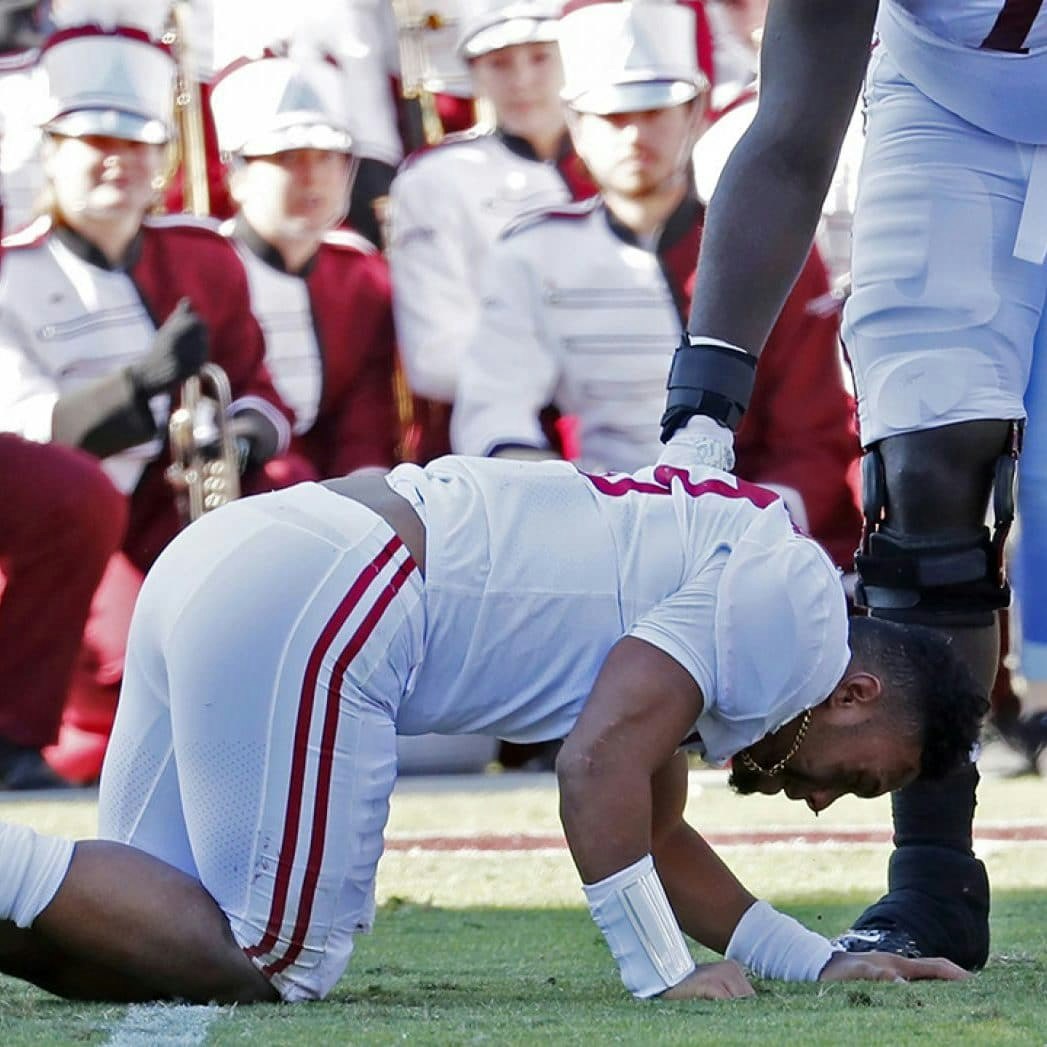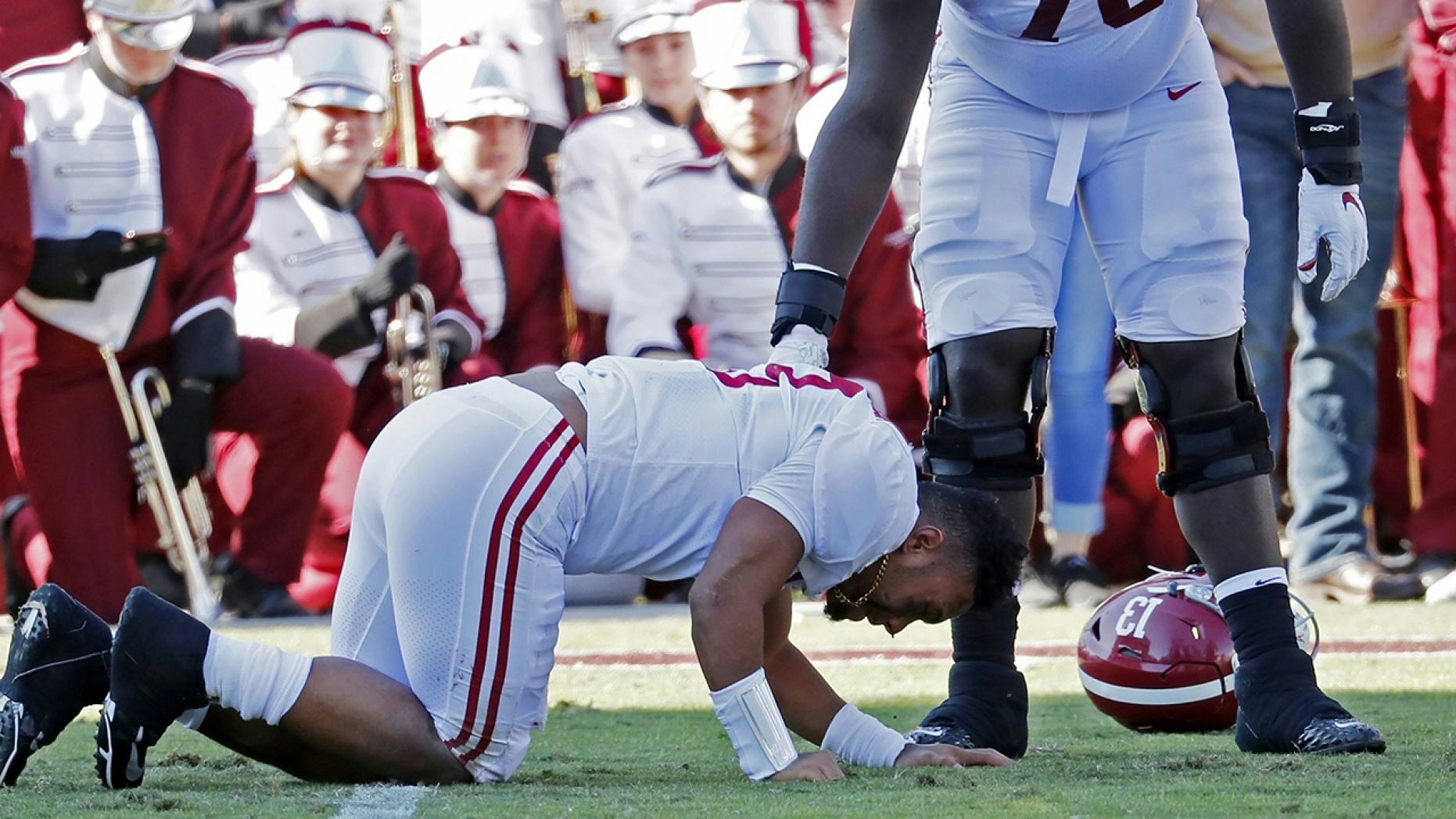
While there were plenty more injuries in the NFL in Week 11, this week’s most traumatic injury came from college football, so we’re doing a special “College football edition of 3DPT’s Injury Review!”
On Saturday, the University of Alabama’s star quarterback, Tua Tagovailoa was tackled by 2 defenders in the game against Mississippi State. The impact of the fall of Mississippi’s defenders on top of Tua, caused his hip to become dislocated. This is a serious injury and one that can have long term complications, so let’s look at this in more detail.

The hip is similar to the shoulder in that it is the joint that connects the limb to the trunk, however shoulders dislocate much more often than hips. One of the main reasons for this is the stability due to bony support. While the shoulder is set up like a golf ball on a tee, the hip has much more overlap from the pelvis, similar to a fist inside a palm. This creates more stability which is needed due to the high forces experienced with movement. All this stability is great, but when something goes wrong it tends to be pretty serious.
90% of hip dislocations happen posteriorly, the same that Tua experienced Saturday. This is when the knee or leg is driven backwards. Falling off a ladder or the impact from the knees on a dashboard in a car accident are common causes. The reason this injury is such a big deal is due to the blood vessels and nerves that can be compromised. When the hip is dislocated these structures are stretched and in severe cases can be torn. This can lead to nerve damage which causes pain and weakness throughout the leg. If blood vessels are torn it can affect the blood supply to the top of the leg bone. When this happens, the bone will die which requires a hip replacement. For the average patient, this is not the worst thing due to how advanced hip replacement surgeries are, but for the athlete it can be career ending.
Fortunately the initial news is that the surgery went well and Tua’s prognosis is for a full recovery. There is always a risk for complications during the recovery but it is good news to start. The recovery for the average person is typically 3-4 months but for an athlete can be upwards of 1 year. Initially the patient will have to be non-weight bearing to allow the bone to heal. Regaining hip range of motion and strength will take time after that before he can begin running followed by cutting and higher impact activities. Hopefully we can see Tua back in action next year with the eventual goal of the NFL as long as all goes well.